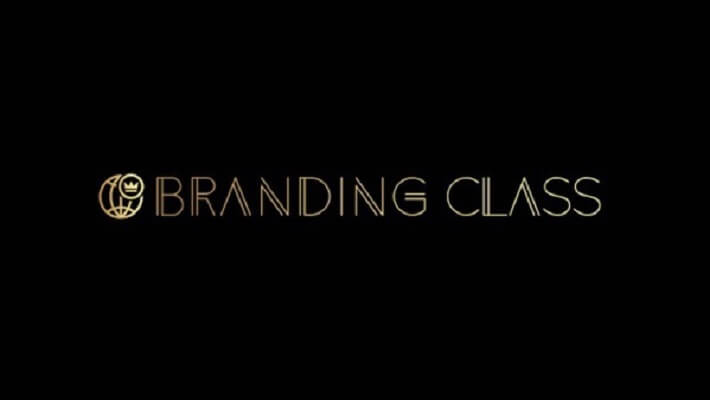Taylor Welch – Belief Architecture
$997.00 $42.00
- Delivery: You Will Receive A Receipt With Download Link Through Email.
- If you need more proof ofcourse, feel free to chat with me!

Description
Proof of payment:

Taylor Welch’s Secrets – Rewiring Beliefs for Peak Performance. This article delves into the core principles espoused by Taylor Welch within his Belief Architecture framework, exploring how mindset, beliefs, and the subconscious mind can be harnessed for enhanced success and personal fulfillment.
Taylor Welch
Taylor Welch has built a career on the principles of effective business and a strong mindset, and his success is a testament to those principles. He advocates for the careful cultivation of internal beliefs as the ultimate driver of tangible outcomes. Welch emphasizes that mastering one’s mindset and belief systems is not just a peripheral advantage, but rather the foundational pillar upon which lasting success, resilience, and genuine fulfillment are built. Welch’s narrative interweaves his own personal journey, marked by both entrepreneurial triumphs and humbling setbacks. This transparency serves to establish a relatable connection with his audience, demonstrating that the principles he espouses are not merely abstract theories, but rather hard-earned insights gleaned from real-world experience. Welch skillfully positions himself not as a guru imparting esoteric knowledge, but as a fellow traveler who has navigated the turbulent waters of entrepreneurship and emerged with a refined understanding of the human psyche. This approach builds trust and credibility, making his teachings more accessible and resonant for those striving for similar breakthroughs.
The Entrepreneurial Voyage and Lessons Learned from Setbacks
Welch does not shy away from sharing his own entrepreneurial journey, and these are not just highlight reels of success. He candidly addresses the inevitable setbacks and challenges that accompany the pursuit of ambitious goals. This openness humanizes him and underscores the universality of the entrepreneurial experience. By acknowledging the commonality of setbacks, he creates a space for empathy and connection with his audience, assuring them that they are not alone in their struggles. Welch positions Belief Architecture not as a panacea for avoiding failure altogether, but rather as a robust framework for navigating these challenges with greater resilience and preventing future stumbling blocks. He emphasizes that setbacks are not signs of inadequacy, but rather opportunities for growth and learning. He quotes Roger Bannister: The man who can drive himself further once the effort gets painful is the man who will win, emphasizing the importance of perseverance. This quote resonates deeply as it encapsulates the essence of resilience – the capacity to push beyond perceived limitations even when faced with adversity. Welch’s approach to failure is not one of avoidance, but rather one of embracing it as an essential component of the learning process.
The Garden of the Mind: Cultivating Confidence and Clarity
Welch introduces a powerful metaphor – “the Garden of the Mind” – to represent the internal landscape that individuals can consciously cultivate and control. This metaphor serves as a visual and conceptual framework for understanding the power of mindset and the potential for actively shaping one’s thoughts, beliefs, and emotions. He emphasizes the importance of understanding and applying “2,200 year-old secrets” to cultivate confidence, certainty, and clarity within this mental garden. This notion suggests that these principles are timeless and have been refined over centuries of human experience, and Welch doesn’t just preach but also provides the framework to cultivate it. The imagery of a garden evokes a sense of intentionality and ongoing maintenance. It suggests that cultivating a positive and productive mindset is not a one-time event, but rather a continuous process of weeding out negative thoughts, planting seeds of empowering beliefs, and nurturing them with consistent effort. Much like a physical garden requires careful tending, the Garden of the Mind demands conscious attention, self-awareness, and a commitment to personal growth.
Welch’s Credibility and Creative Team Building
Welch reinforces his authority by citing his extensive track record as a serial entrepreneur. He notes, “In the last 10 years I’ve hired 700 employees, successfully generated almost 9-figures in revenues for my companies, and assembled creative teams from all over the world.” By sharing these achievements, he establishes himself as a seasoned business leader with a proven ability to drive results and build successful organizations. This credibility is crucial for instilling confidence in his audience and demonstrating that he is not merely a theorist, but a practitioner who has walked the walk. His emphasis on assembling creative teams highlights his understanding of the importance of collaboration and diverse perspectives in achieving ambitious goals. It also suggests that building a strong and innovative team requires more than just technical expertise. It demands a leader who can foster a culture of trust, communication, and shared vision. Welch’s ability to assemble these types of teams further underscores his leadership acumen and his understanding of the human element in business success.
Belief Architecture
Belief Architecture, as framed by Taylor Welch, goes beyond superficial affirmations, offering a structured, in-depth exploration of the subconscious mind and its profound influence on actions, decisions, and ultimately, results. It proposes a method for dismantling limiting beliefs, reshaping thought patterns, and aligning internal values with external goals to achieve sustained success. Welch’s intention is not simply to offer motivational platitudes, but rather actionable tools for individuals to consciously engineer their internal world. The promise of Belief Architecture lies in its potential to unlock hidden reservoirs of potential by disrupting the subconscious barriers that often inhibit progress. It underscores the principle that true and lasting success is not solely determined by external circumstances or sheer force of will, but by the inner foundation of beliefs that shape our perceptions, attitudes, and behaviors. In essence, Belief Architecture represents a paradigm shift, empowering individuals to take ownership of their minds and become the architects of their own destinies. It’s not just about changing what you do; it’s about changing who you are at your core.
The Reticular Activating System (RAS) as a Programmable Filter
Welch places significant emphasis on the Reticular Activating System (RAS), describing it as a programmable filter within the brain that selectively directs attention and influences perception. He explains that the RAS operates based on a set of pre-programmed criteria, including values, novelty, and perceived threats. This mechanism helps prioritize information and focus attention on what is deemed most relevant or important. He explains how the RAS filters information based on values, novelty, and perceived threats. Welch illustrates how a misprogrammed RAS, often rooted in past failures and negative experiences, can lead to a self-fulfilling prophecy of fear, inaction, and a limited life. This misprogramming can manifest as a perpetual state of anxiety, a tendency to avoid risk, and a diminished capacity for seizing opportunities. Welch emphasizes the critical need to consciously program the RAS with positive and empowering beliefs in order to unlock greater productivity, reduce anxiety, and generate what he calls “clean” momentum. This process involves intentionally directing attention towards desired outcomes, reinforcing positive associations, and reframing past failures as valuable learning experiences.
Welch’s framework also addresses the potential pitfalls of inadvertently programming the RAS with limiting beliefs. This programming often occurs through repeated exposure to negative messages, traumatic experiences, or ingrained societal narratives. These negative inputs can create a feedback loop, where the RAS reinforces existing fears and anxieties, thereby hindering progress and perpetuating a cycle of self-doubt. Belief Architecture aims to disrupt this cycle by providing individuals with the tools and techniques necessary to reprogram their RAS with beliefs that promote confidence, resilience, and a proactive mindset. It provides the ability to influence perceptions and redirect focus towards desired goals. This reprogramming process requires conscious effort, self-awareness, and a willingness to challenge deeply held assumptions.
The Four Master Protocols of Belief Architecture
Welch introduces Four Master Protocols that form the core of his Belief Architecture framework. These protocols are designed to provide a structured and comprehensive approach to mindset mastery, encompassing the reordering of core ingredients like fear and values, goal setting, and belief systems. These protocols are not isolated techniques but rather interconnected components of a holistic system, each building upon the others to create a synergistic effect. The intention is to provide a roadmap for individuals to consciously engineer their internal architecture and align their beliefs with their desired outcomes.
Structural Integration: This protocol emphasizes the importance of understanding and reordering existing core ingredients like fear and values to serve rather than hinder progress. Welch uses the example of fear being necessary but detrimental when it sits at the top of the mental hierarchy. He emphasizes the importance of knowing one’s values and aligning them correctly. This protocol acknowledges that emotions like fear are not inherently negative but rather can be valuable sources of feedback when properly managed. However, when fear dominates the mental landscape, it can paralyze action and stifle creativity. Structural Integration involves consciously reassessing the hierarchy of values and emotions, elevating empowering beliefs and subordinating limiting fears.
Goal Setting: Welch’s approach to goal setting extends beyond traditional SMART goals, emphasizing the need to understand how goals impact the RAS and how this can be used for motivation. He explains how the RAS prioritizes information and how past failures can negatively program it, leading to risk aversion. He stresses the importance of telling the RAS what to find. This protocol highlights the importance of setting goals that are not only specific, measurable, achievable, relevant, and time-bound, but also deeply resonant with one’s values and beliefs. Welch stresses the importance of aligning goals with underlying values, ensuring that they are not merely extrinsic targets, but rather expressions of one’s core identity and purpose.
Belief System: This protocol focuses on identifying and modifying the underlying beliefs that drive motivation and values. He differentiates between what is important to you to do and what is important for you to be. He argues that misaligned values lead to a lack of drive and fulfillment, and that tweaking belief systems can reduce the need for constant discipline. This protocol delves deeper into the subconscious realm, exploring the bedrock beliefs that shape our perceptions, attitudes, and behaviors. It differentiates between what is “important to you to do” and what is “important for you to be,” highlighting the importance of aligning actions with intrinsic values. Welch argues that misaligned values can lead to a lack of drive and fulfillment, while aligning beliefs with intrinsic values can unlock a wellspring of motivation and purpose.
Consciousness/Quantum: This protocol explores the interconnectedness of everything and provides exercises and models to create MASSIVE forward momentum by addressing conflicting values and how the mind copes with failure. He highlights the importance of learning from risk and filing lessons correctly. This protocol delves into the more abstract realm of consciousness and its relationship to the quantum field. It emphasizes the interconnectedness of all things and the power of intention to influence outcomes. WELCH introduces exercises and models designed to address conflicting values and reframe how the mind copes with failure. He highlights the importance of learning from risk and “filing lessons correctly,” suggesting that even setbacks can be valuable sources of wisdom when properly integrated into one’s belief system.
The Quitting Fantasy and Operating in the Metaphysical Field
Welch touches upon the common experience of the “Quitting Fantasy” among entrepreneurs, acknowledging the temptation to give up when faced with overwhelming challenges. He argues that true and lasting success requires understanding and operating within a “metaphysical, energetic, quantum field.” He warns against the “worst sin of destroying oneself for nothing,” quoting Fyodor Dostoevsky. This is a powerful reminder that our beliefs can either empower us or destroy us. The reference to a “metaphysical, energetic, quantum field” introduces a more esoteric dimension to Belief Architecture, suggesting that reality is not merely a collection of material objects but a dynamic interplay of energy and information. He emphasizes the importance of developing an awareness of this underlying field and operating in alignment with its principles, such as the law of attraction and the power of intention.
It’s a call to embrace the interconnectedness of all things and to cultivate a mindset that is open to possibility and attuned to the subtle energies that shape our reality. Belief Architecture becomes a framework for harnessing these energies to create positive momentum and manifest desired outcomes. Welch’s warning against “destroying oneself for nothing” underscores the importance of perseverance and resilience, even when faced with seemingly insurmountable obstacles. He argues that the “Quitting Fantasy” is often a manifestation of limiting beliefs and a lack of understanding of the true potential that lies within each individual.
The Value Proposition and Limited-Time Offer
Welch positions Belief Architecture as a high-value product, initially claiming it should sell for a couple thousand dollars and previously selling for over $5,000. He presents a limited-time offer for $500 (priced can change depend on marketing strategy) for the first 100 buyers as part of a 1-year anniversary promotion, emphasizing that this is a unique opportunity to access his pinnacle of work. He stresses the real scarcity of this offer. The intention is to create a sense of urgency and exclusivity, motivating potential buyers to take immediate action. Of course, the true value of Belief Architecture extends far beyond its monetary price tag.
The program’s potential to transform lives through mindset mastery and belief restructuring ultimately determines its worth. Its ability to unlock potential, promote resilience, and inspire lasting change is what makes the program invaluable. The limited-time offer serves as an incentive, enticing those who are on the fence to seize the opportunity to invest in their personal and professional growth. While Welch’s sales tactics are undoubtedly persuasive, the underlying strength of Belief Architecture rests on its ability to deliver tangible results: It gives practical strategies and insights to help people enhance their beliefs.
Conclusion
Taylor Welch’s Belief Architecture presents a compelling framework for understanding the profound impact of mindset and beliefs on achieving success and fulfillment. By emphasizing the programmability of the subconscious mind (RAS), and providing a structured approach to mindset mastery through the Four Master Protocols, Welch empowers individuals to take control of their inner world. This framework, rooted in ancient wisdom and modern scientific principles, offers a powerful roadmap for overcoming limiting beliefs, cultivating resilience, and aligning actions with core values. Ultimately, Belief Architecture transcends superficial motivational techniques, providing a deeper understanding of the human psyche and the transformative potential that lies within each individual. The principles Welch advocates for serves as a guide for building a life fueled by purpose, driven by unwavering belief, and aligned with one’s full potential.
Sales Page: _https://archive.is/jur8Z#selection-319.1-4097.54





